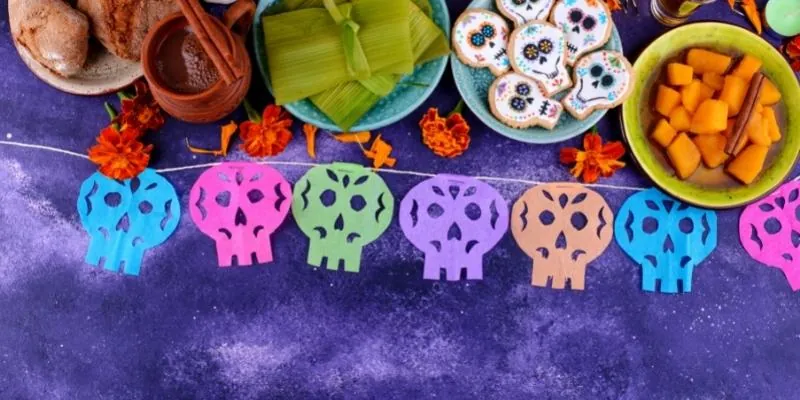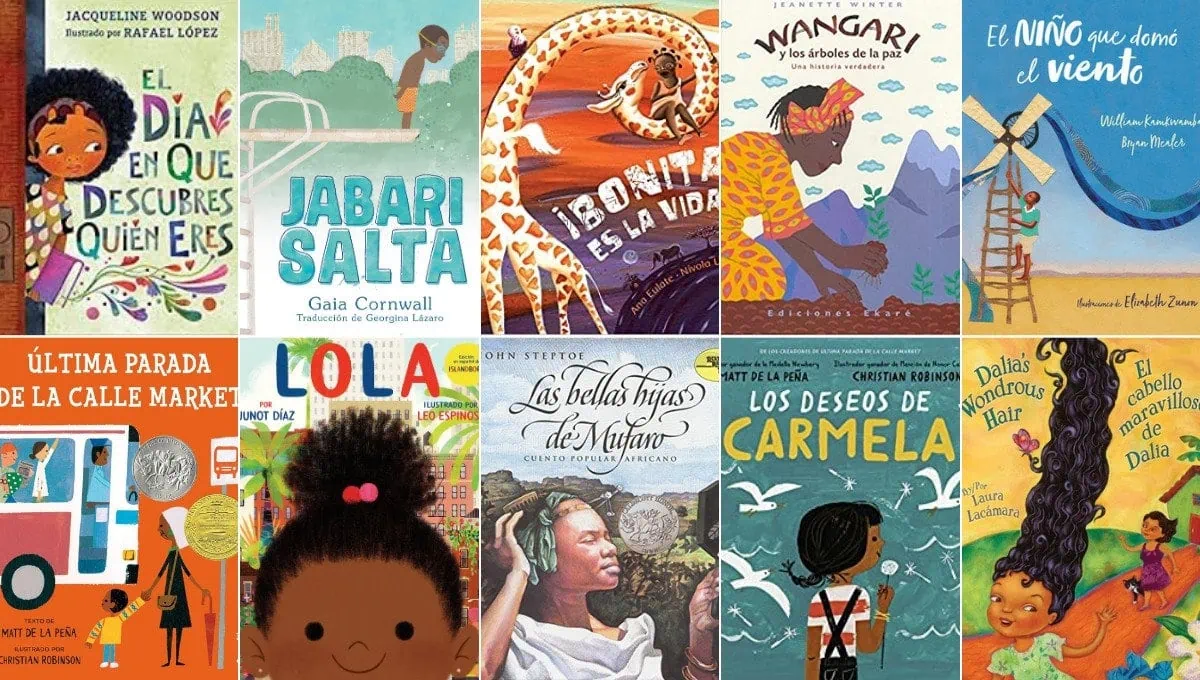13 First Day of Spanish Class Icebreakers
Inside: Icebreakers for Spanish classrooms the first week of school.
Building community the first couple of days in school is important. Icebreakers can be a fun way to get to know each other a little and even introduce a bit of Spanish! They’re especially fun for returning students.
Note: As a semi-introvert, most icebreakers terrify me. All the ones that make you remember everyone else’s name, think of a clever adjective for yourself,
or– THE WORST KIND–
make up a dance move.
Rest assured– all the ideas here are introvert-approved!
These icebreakers also double as brain breaks that can be used throughout the year. Also tuck them away for a day when you need a community reset.
The first week of class, it’s important to establish a few things:
- We speak in the TL as much as possible. This isn’t a class about Spanish; it’s a class mostly in Spanish.
- I care about you. You’re safe here: safe to try new things and make mistakes.
- My job is to make sure Spanish is comprehensible! Your job is to stay with me and contribute where you can.
To see a comprehensive list of games, check out my page on Spanish learning games.
13 Icebreakers for High School Classes
I really think it’s important to do low-pressure icebreakers those first days, especially if you’re trying to do so in another language.
Games that build community, look for things in common, and ease everyone into the target language can be a great way to start.
YOU, the teacher, are the best judge of how silly the games can be, and whether it’s best to do an icebreaker the first day or a few days in.
Hopefully these will help!
List of Icebreakers:
1 . The Cognates Game I
2. Find Your Blob
3. Strip Bingo
4. Siéntate Si…
5. Birthday Lineup
6. Games with Music in Spanish
7. The Cognates Games II
8. Human Bingo
9. 4 Corners
10. If You Were on a Deserted Island
11. Two Truths and a Lie
12. The Salad Game
13. The Circumlocution Game
1. The Cognates Game I
Mark one side of the room as “I like” and the other as “I don’t like” (in the TL if desired). Call out cognates (like “chocolate” and “animales” for English-Spanish) and student stand on the side of the spectrum that shows how they feel about it.
This is a good way to show students they can understand many words right away, even when they are brand-new to the language.
Distance learning tweak: Give students a card with “me encanta,” “me gusta,” and “no me gusta,” to respond with when you have a grid of videos like on Zoom.
(If it helps, I can email you a set of free emoji cards you to download and print – sign up below!)
2. Find Your Blob
This is a low-pressure get-to-know-you activity. Give the class a term or questions like “number of siblings,” “What color are your eyes?” or “favorite subject.” The students need to find their classmates with the same answer stand in a group. If two separate “blobs” form over the same things, they should join.
The Blob Game is good for getting to know each other and finding out things they have in common.
3. Strip Bingo
This one is more innocuous than it sounds! If you are planning to start off with an “About Me” presentation, or an intro to the syllabus or procedures, make it interactive with Bingo.
Choose about 5-7 key words from your presentation, words that will be repeated frequently. Write those words on the board, and tell students to write them down in a horizontal row on a piece of paper, but in a random order.
As you give your presentation, tell students they may tear off the key words as they hear them, but ONLY if the word is on the outer edge. If the word if blocked by a word to the left or the right, it can’t get torn off. The first student to tear off all the words gets a prize. (From from Martina Bex at the Comprehensible Classroom.
Distance learning tweak: Just make sure the students have paper ready! You could have them take a picture of their original paper strip as “proof” if they win.
4. Siéntate Si…
Have all the students stand up and ask yes or no questions. If their answer is no, they sit down. The last person standing wins.
5. Birthday Lineup
When students come in the room, have the months of their year posted in Spanish, and put paper on their desks that says “¿Cómo te llamas?” When they come in, they sit down and write their names.
Call out a month of the year (out of order), and have any students with birthdays that month come to the front. If they know some Spanish, have them arrange themselves by their birthday dates without using English.
(You could use any categories for this; it could be favorite colors, hobbies, etc.)
Snap a picture of everyone holding their papers up, so you can start practicing their names as well!
6. Games with Music in Spanish
These don’t require speaking– they’re just for fun. Ending the first day of class with games played to really good music in the TL just makes everyone feel good about class, and leave with a good feeling about the language! (Grab some songs in Spanish from my music page.)
- El hueco: This one was a favorite dinámica back in Peru, and requires no speaking. Arrange chairs in a circle, and everyone sits down. Make sure there is one extra chair, so it will be empty. Start the music.
The empty chair will have two people on each side. When the music starts, they grab hands (optional) and run to get someone to sit in the empty chair. Of course, when those three sit down together, two new people will have an empty chair between them. The point is to never be sitting next to the empty chair, so they then run and grab a person to sit between them. When the music stops, whichever two people have an empty chair between them are either out or get a “punishment.”
In Peru, the castigos were pretty embarrassing; I’d suggest something light like high-five the teacher or count to 10. - Musical Chairs
- Islands: Set out several newspapers around the room. This is similar to musical chairs, except that when the music stops, everyone tries to stand on the newspaper. Each time, the newspaper gets folded in half, and whoever isn’t touching the paper is out. There will be as many winners as there are newspapers. Obviously, this is more physical, so use your discretion!
7. The Cognates Games II
This is another version of the cognate game. Use my PPT bracket outline to project onto the board, and list cognates on each side (extreme right and extreme left).
Do a tournament to see which cognate beats all the other ones. Start on the outside, and have students vote for the top or bottom choice by going to the left or right side of the room. This game is fun because you can introduce cognates and get to know one another as well.

If desired, use the TL and make it comprehensible with pictures, so that you can have more useful terms for finding out student preferences (hobbies and pastimes, for example). If you are calling out the terms in the TL and pointing to them, you can stay in the TL the entire time, and they will understand you. This is either great review for returning classes, or a good way to show new students they can understand the new language, even on the first day.
If you have more advanced classes, you might choose a category like “things done over the summer.” Let students share what they did, and vote on favorite activities. For a more ironic group of students, you could have them compete for most boring summer activities, the worst part of summer vacation (and trick them into remembering what’s good about the school year).
Distance learning tweak: Give students a card with “me encanta,” “me gusta,” and “no me gusta,” to respond with when you have a grid of videos like on Zoom.
For Returning Classes that know each other:
8. Human Bingo
Prepare a board that has questions your students know from previous years. Remember to keep them simple, and include picture clues if necessary. The students must go around the room asking questions to their peers. (Do you have a cat? Is your birthday in September? Are you a new student?) If someone answers yes, they write their initials down in that spot. Whoever gets Bingo first wins. (This is similar to “Find someone who…”)
9. 4 Corners
Four corners is great any time of the year, but it’s a perfect icebreaker to learn personalities and preferences. Designate 4 corners of the room with any sort of category (like it, love it, hate it, etc, always, never, sometimes, etc.) Show the class an image and say a word, or use cognates, and students choose the corner that best fits for them.
10. If You Were on a Deserted Island
Give this classic question a language twist by telling students to think of three things they’d bring to a deserted island– but only using words they remember from the year before in the TL. Everyone writes down three things, and you collect the cards. Have everyone guess who wrote which card.(The nice thing about this is you can rephrase their Spanish so it’s in full correct sentences and comprehensible while everyone is listening.)
Distance learning tweak: Have students type and send their “cards” in, and they can guess by sending answers in the chat or responding in a poll for who they think it is.
11. Two Truths and a Lie
Students write two truths and lie about themselves in the TL, on a note card. They write their name at the top, and give them all to you. If their language isn’t perfect, you can correct errors and make the sentences comprehensible as you read them out loud. Don’t say the name, but let the class first guess who wrote the sentences. Once everyone understands them all, and knows who it is, have the students guess which sentence is a lie.
Social distancing tweak: As students finish their cards, take picture of their sentences (if they have devices, they could send you a quick picture).
Distance learning tweak: Have students type and send their “cards” in, and they can guess by sending answers in the chat or responding in a poll for who they think it is.
12. The Salad Game
Write celebrity names or any terms on slip of paper. Students sit in a circle. Divide the class into 2 or more teams by counting 1-2. For each team’s turn, set a time (1-2 minutes).
1st round (verbal clues): The first team begins. One students draws a slip of paper, and describes the person or word to his or her team without saying the actual name. As soon as the team guesses, the next team member draws another slip and play continues until the timer goes off. Then the other team gets a turn. Once all the slips are used up, tally the points for each team.
2nd round (one-word clues): This round is the same as the second, except that the students must only use one word to get their team to guess the celebrity or word.
3rd round (actions): Similar to the first and second round, except that only gestures may be used as clues.
This game would work to explain circumlocution, and also to talk about proficiency levels. You can discuss how being a “novice” might mean only being able to communicate in isolated words or phrases (and/or gestures), and moving up in proficiency will mean putting words together and then communicating through more complicated sentences.
Games in English:
12. The Circumlocution Game
Ok, this is basically Taboo. Prepare slips of paper with words on them, and divide the class into two groups. Set a timer (1-2 minutes). One student draws a slip of paper, and tries to get his/her team to guess the term without saying the word itself. After the word is guessed, the next team member draws a word, and so on until the timer goes off. Count the slips up and give those points to the team.
Use this game to talk about circumlocution, talking “around” a word you don’t know in to avoid resorting to English. Establishing an expectation of circumlocution is a big part of staying at least 90% in the target language.
Distance learning tweak: Possibly, you the teacher could be the describer (or designate a student with strong speaking skills) and have students type or say answers, with a helper monitoring the responses.
What are your favorite icebreakers for high school and middle school? Let me know in the comments below.
Like it? Pin it!








Hola, me encantan todas las actividades que has compartido. Solo que estoy confundida de como jugar el juego del Hueco. Pudieras explicarmelo con más detalles por favor.
Mil gracias 🙂
I just updated the description! Hope it makes more sense now. 🙂
Todavía estoy confundida. ¿Todos corren, or solamente los dos al lado del hueco? ¿Qué pasa en el segundo paso después de quitar las personas al lado del hueco? ¿Ud. quita dos sillas?
AS the school year comes to and end I always start planning for the next school year. These are great ideas for the first week of school. Thanks.
http://www.creativeaslteaching.com
Thanks for these awesome suggestions. Looking forward to getting started this year. Éxitos y saludos!
HI! I am a beginner French teacher and your website is huge inspiration for me and has changed how I approach and plan my classes!
I just wanted to let you know that the sharing buttons in the left of the page are overstepping the text of some of your pages.
Thank you for your work!
All your posts are sooo helpful. You give so many great ideas. Thanks for another great one.
This was so helpful and I especially appreciated the updates for social distancing and remote learning. Thank you!
Me encanta mucho!
This gave me Muchos ideas Nuevos! ¡Muchisimas graciaspor todo!
thank you
Elisabeth, la verdad que eres una inspiración y me encantan todas las ideas que compartes. ¡MIL GRACIAS!
¡Todas son ideas estupendas y tan variadas! Mil gracias por compartírnoslas 🙂